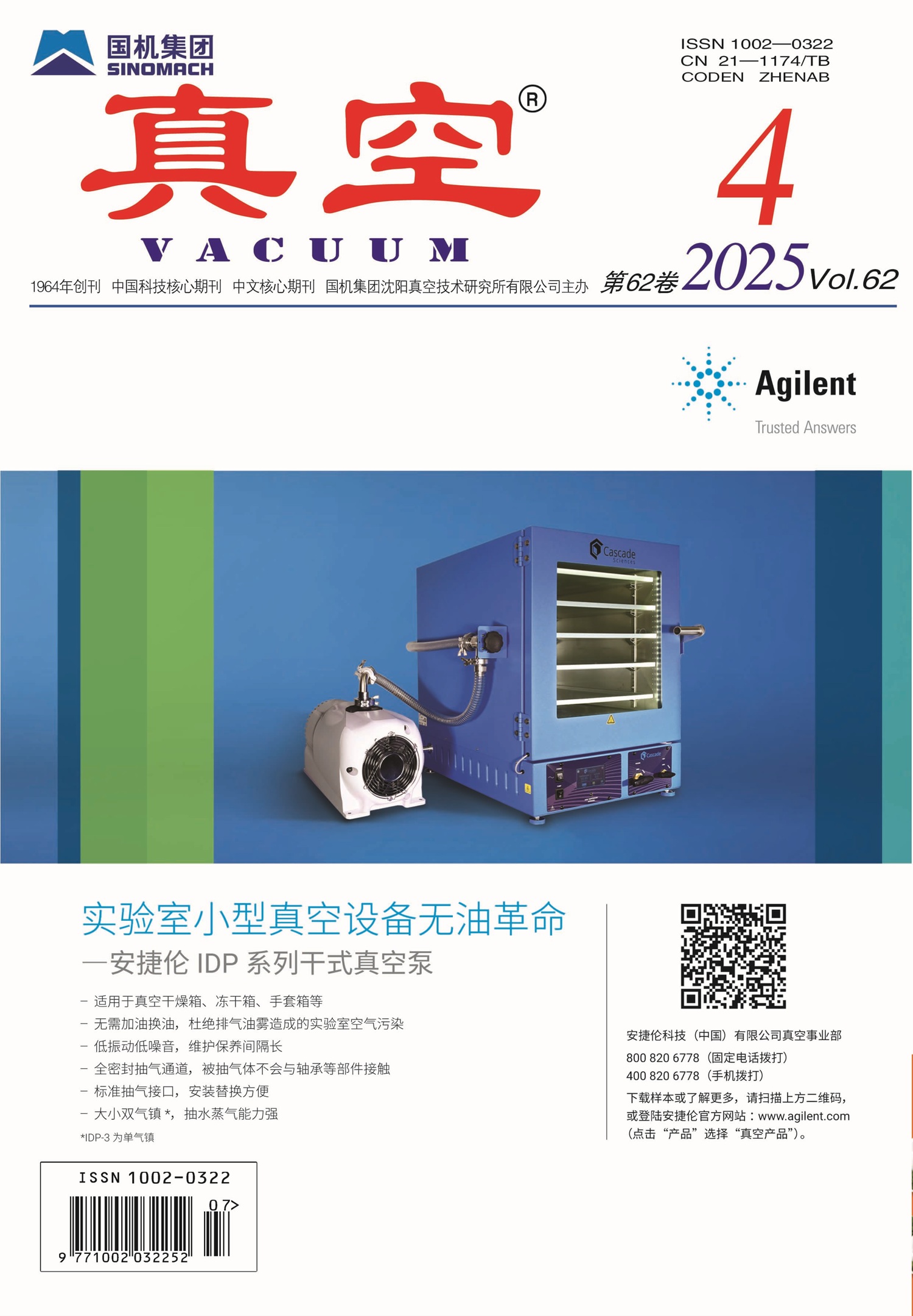|
|
Study on Preparation and Properties of CrAlN Anti-erosion Coating
LIU Ling-yun, LIN Song-sheng, WANG Di, LI Feng, DAI Ming-jiang, SHI Qian, WEI Chun-bei
VACUUM. 2020, 57 (2):
40-46.
DOI: 10.13385/j.cnki.vacuum.2020.02.08
In order to improve the erosion resistance of titanium alloy material, CrAlN coating was deposited onto TC11 titanium alloy by vacuum cathodic arc deposition technique. The effects of target current, bias voltage and furnace pressure on the structure and properties of the coating were investigated. Scanning electron microscopy was used to observe the surface and cross-section of the film layer. Metallographic microscope was used to quantitatively analyze the large particles on the surface. Microhardness tester was used to measure the Vickers microhardness. The sandblasting tester was used to resist the erosion of the coating. The properties were tested by measuring the thickness of the coating and the depth of the etch pit by a three-dimensional surface profilometer. The X-ray diffractometer characterizes the crystal structure in the coating. Increasing the target current from 70A to 110A, although increasing the deposition rate of the coating, it will increase in the number of large particles on the surface of the coating to decrease the erosion resistance of the coating. The furnace pressure is increased from 1 Pa to 4 Pa, which is effective to reduce the size and quantity of particles on the surface of the coating, but also reduce the deposition rate and hardness to a certain extent. The bias has the greatest influence on the structure and properties of the CrAlN coating. When the bias voltage is-50V, the coating has a preferred orientation of(200). The 100V coating has a(111)preferred orientation. At-200V, the preferred orientation of the coating is not obvious; and as the bias voltage increases, the hardness and erosion resistance of the coating increase, and at high erosion angles, the failure mechanism of erosion is brittle failure. The target current has the greatest influence on the surface quality in the process parameters; the growth orientation of the coating is closely related to the bias voltage; the surface quality and hardness of the CrAlN coating directly affect the erosion resistance of the sand, and the influence of the bias voltage on the erosion resistance of the coating maximum. The final optimized process parameters are of target current 90A, bias-100V and furnace pressure 4Pa.
References |
Related Articles |
Metrics
|

 Table of Content
Table of Content
 Table of Content
Table of Content